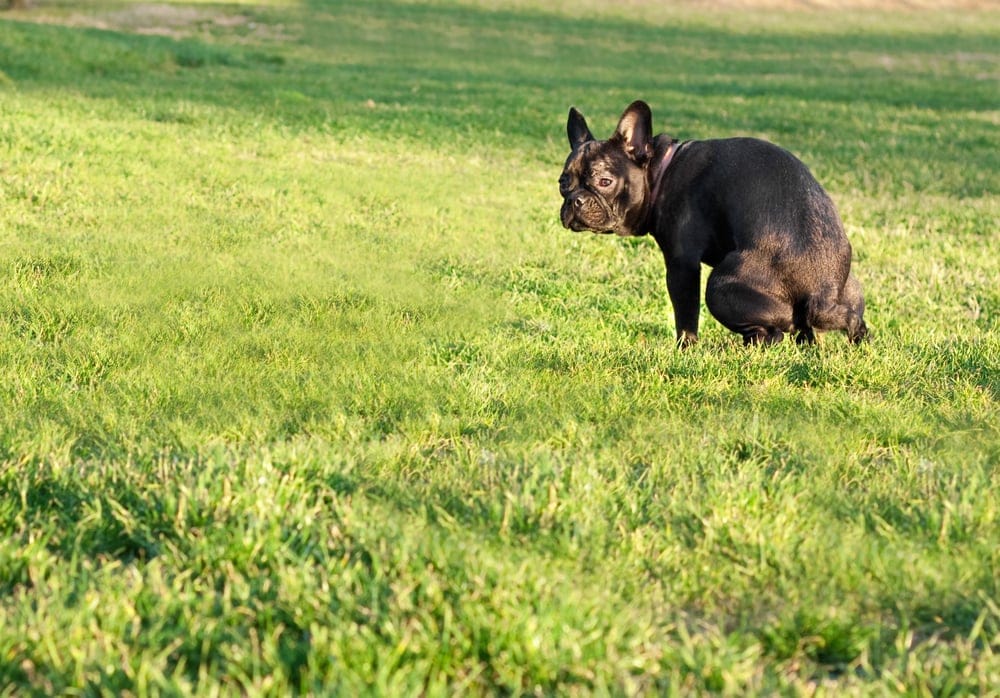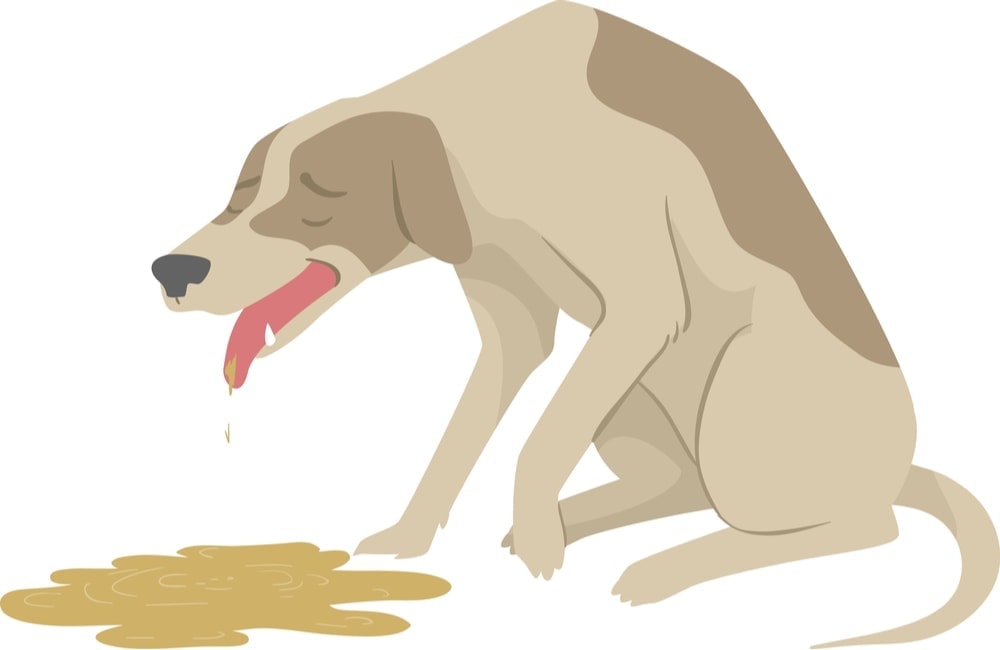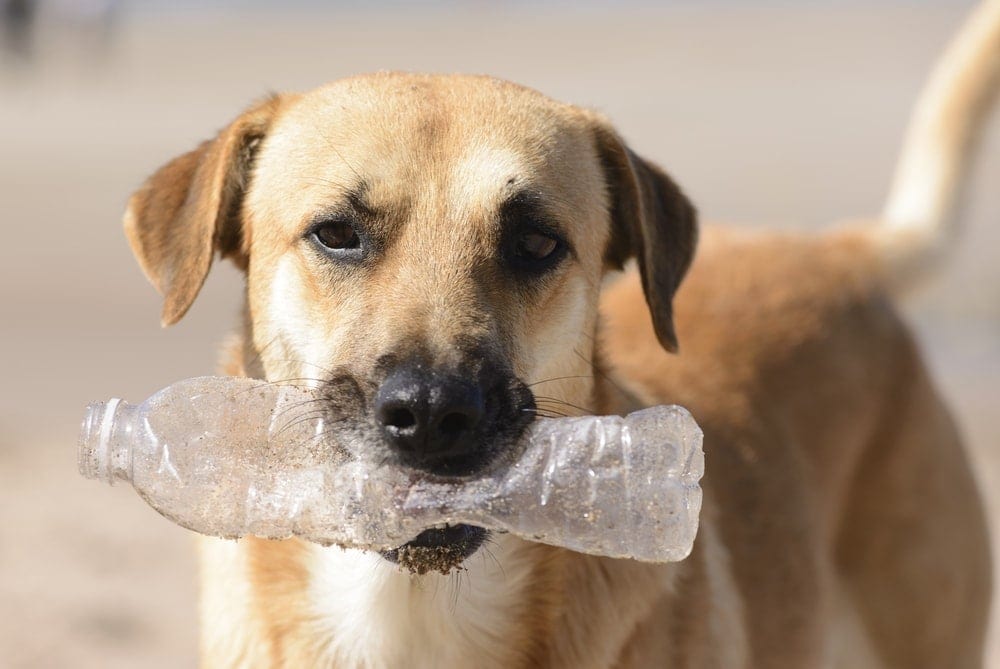If there is blood in your dog’s stool, there is most likely something wrong that you will need to know about.
In this article, we will go through some of the possible reasons for this. The more you learn about these causes, the better off your pet will be.
1. Parasites
Blood in a dog’s stool can be an indication of intestinal parasites. While some parasites feed on the exterior of your dog’s body, others burrow into their intestines. These parasites can do a lot of damage within a very short amount of time.
Some of the other signs that your dog has intestinal parasites include:
- Diarrhea
- Vomiting
- Scooting
- Sudden weight loss
- Coughing
- Bloating of stomach
A veterinarian can prescribe medication to get rid of your dog’s parasites, and it is usually very effective. The longer you wait to get your dog examined, the more likely it is that the parasites will do long term damage.
2. Sudden Change in Diet
Believe it or not, suddenly changing your dog’s diet can actually cause blood to appear in the stool. This is due to inflammation of the colon, which results in excess straining when defecating.
If you are going to switch your dog to a new food, it is important that you do it gradually. You should keep about ten percent of the dog’s old food with their new food for the first 3-7 days. This will reduce the chances of internal irritation and therefore blood in your dog’s stool. If you are looking for best food for your dog, check out this article: The Best Dog Food.
Even certain treats can cause blood to appear in the stool of your pet. You need to make a point of choosing the treats you give them very carefully. Look at all of the ingredients before deciding on anything in particular.

3. Injury to the Rectum
Your dog could have an injury to its rectum, which is causing the bloody stool. It is possible that they ingested something sharp that scraped the inner lining of their rectum, causing the bleeding to occur. Sometimes a dog will eat a bone that splinters off and scrapes the lining of their intestines.
A rectal injury can be fairly mild and heal nicely on its own, but it can also be incredibly serious. If the tear is bad enough, it can cause severe internal bleeding. In this case, there will most likely be a lot of blood present in your dog’s stool. It is imperative that you get them medical attention right away.
4. Medications
There are various medications that can also cause blood to appear in your dog’s stool. NSAIDs like Ibuprofen or Aspirin can sometimes lead to ulcers that bleed. This is why it is so important that you talk to your vet before giving your dog any human medication. It is also a good idea to keep a close eye on them, as there are numerous possible side effects.
You may notice that your dog’s stool becomes darker than normal after giving it some Pepto Bismol. While this isn’t blood, the change in stool color can be concerning for a lot of owners. Keep in mind that the color will return to normal within a day or so after you stop giving them this medication.
5. Tumors
Your dog’s stool could have blood in it due to a cancerous tumor somewhere in their body. This can definitely be life-threatening if it is not dealt with quickly. While tumors are more common in older dogs, they can develop at any age in the animal’s lifetime.
6. They Consumed Blood
If your dog recently ingested blood, either it’s own or that of another animal, a little bit could appear in their stool. It is also possible that your dog has some sort of injury in their mouth, which would explain why they swallowed the blood in the first place.
It is a good idea for you to check your dog’s mouth thoroughly to make sure there aren’t any cuts or wounds. It is possible that they have a bleeding mouth ulcer, which is not altogether uncommon in these animals.

7. Viral Infection
Even a viral infection can cause stool to show up in your dog’s blood. Parvovirus, in particular, has been known to cause this. It is a very serious virus that often causes a lack of appetite, diarrhea, vomiting, and lethargic behavior.
If you think that your dog might have this type of infection, you will need to get them medical treatment right away. The longer you wait to get them checked out by your vet, the less likely they are to make a full recovery.
8. Gastroenteritis
The hemorrhagic variety of gastroenteritis could also be the culprit when you notice blood in your dog’s stool. This condition doesn’t always have a specific cause, but it does require immediate medical attention.
Your dog will need to receive IV fluids immediately. The veterinarian will likely want to keep them overnight for observation. This will ensure that they recover fully without any complications. Most dogs end up being just fine, provided they receive treatment as soon as possible.
Conclusion
- Intestinal parasites are often the cause of blood in a dog’s stool, and they can do a lot of harm to these animals.
- A sudden change in your dog’s diet could also be responsible for blood in their stool.
- If you are going to switch your dog to a new food, you’ll want to do so gradually to avoid any negative health effects.
- It is possible that there is blood in your dog’s stool due to an injury to their rectum or the lining of the intestines.
- Certain medications like NSAIDs can cause bleeding ulcers, which may very well lead to blood in the stool.
- A cancerous tumor is another possibility, though it can be difficult to tell if this is the case unless you visit your vet.
- Some viral infections like Parvovirus can cause blood to appear in the stool.
- If your dog has Hemorrhagic Gastroenteritis, it could start to bleed on the inside.











